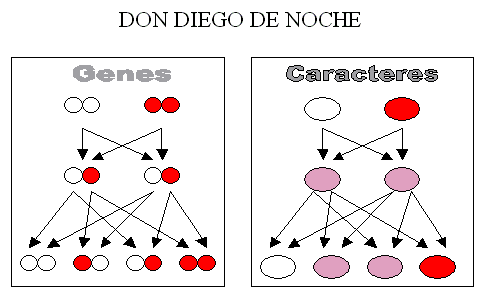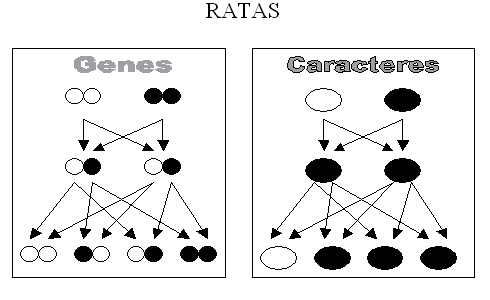|
| |
I consider the results of the statistic study, included in MeMint, with the longitudinal data of the Young Adulthood Study, 1939-1967 to be conclusive about the genetic influence on intelligence (r2 till 0,99), the significance of the less powerful gene, important functionalities of the sexual diversification and about the existence of a teleological evolution. |
|
| |
|
|
||||||
|
|
|
Translate Last update: September 2002 |
GENERAL THEORY OF THE CONDITIONAL EVOLUTION OF LIFE |
||
|
||||||
|
||||||
|
|
|||||
|
||||||
|
|
|||||
|
||||||
|
|
|||||
|
||||||
|
|
|||||
|
||||||
|
|
|||||
| ||||||
|
|
|||||
|
||||||
|
|
|||||
|
||||||
|
|
|||||
This is a translation of a reduce version of the GTCEL e-book. (The full version is in Spanish) |
|
NOTE: The model of the inheritance of intelligence has been validated using the longitudinal data set of the Young Adulthood Study, 1939-1967.
|
|
|
PREVIOUS THEORIES OF THE EVOLUTION. a) Lamarck. Lamarck's Evolutionary doctrine in his Zoological Philosophical Work written in 1809. His theory was as follows:
Summary: functions create organs and heredity determines the change in offspring. |
|
b) Darwin. Biological theory by Charles Robert Darwin, the English Naturalist in his main work The Origin of the species, en 1859. As a contrast to Lamarck's evolutionary doctrine, Darwin proposed natural selection as the basis of evolution. His theory was as follows:
Later, in his The Origin of Man and Sexual Selection (1871), he added a new factor, sexual selection, in which male or female chooses partners with more attractive qualities. |
|
c) Mendel. Laws, which govern heredity discovered by Johann Mendel, Austrian Augustine monk, in his Investigations on hybrids in plants (1865). This theory consists of the following two laws:
This law can be explained better using the following example, of white and red varieties in the Marvel of Peru plant: The first generation produces all pink flowers. The second produces one white, two pinks and one red flower. During the third generation, if white flowers are mixed with other white flowers, they produce white flowers; red flowers with other red flowers produce red flowers, and pink flowers repeat the results in the second generation of hybrids. |
An example is given of the cross between white and grey rats: The first generation produces grey rats. The second produces one white and three grey rats. The appearance of white rats in a ratio of 1 to 4 in the second generation shows that the white (recessive) character has not been destroyed, but remains hidden. For ease of understanding, only one character (mono-hybridization), has been included, but two or more (dihybridization or polihybridization) can also be included and the process would be similar, although the possible combinations would grow in geometric proportion. |
|
Theory derived from Darwinism which, supported by scientific advances in cytology, biochemistry, genetics, etc. denounces the influence of the environment on the evolution of the species, and the heredity of acquired characters. Giving merit to variations in germination produced by natural selection and displayed through new morphological or functional characters. |
|
|



